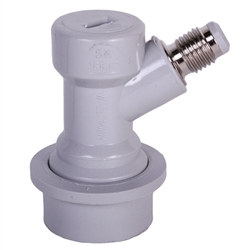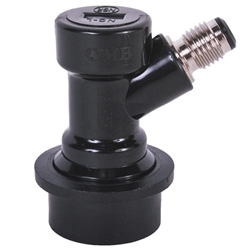There's a flat o-ring under that cap making the actual seal with the body of the QD.
Make sure it's in there and not deformed. I don't think you can over-tighten that cap, so nice and tight should do it.
But... one little bubble? How often?
There could be other leaks. hose connections, etc. You can stick that keg upside down in a bathtub or large sink if it comes to that.
Also make sure the connection of the regulator to the tank has a seal in it. Can be a rubber, nylon, or fiber washer. The large connection nut should be tight enough too.
Have you weighed the tank yet?








![Craft A Brew - Safale BE-256 Yeast - Fermentis - Belgian Ale Dry Yeast - For Belgian & Strong Ales - Ingredients for Home Brewing - Beer Making Supplies - [3 Pack]](https://m.media-amazon.com/images/I/51bcKEwQmWL._SL500_.jpg)
























































